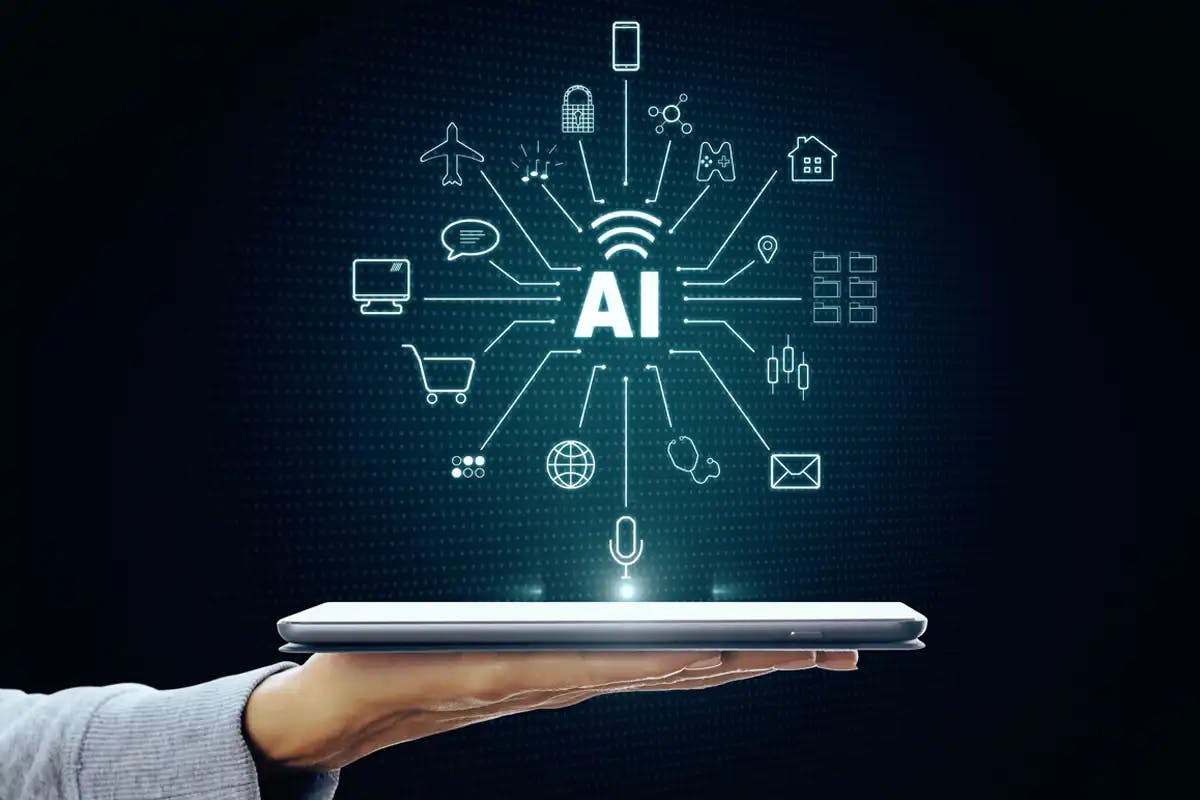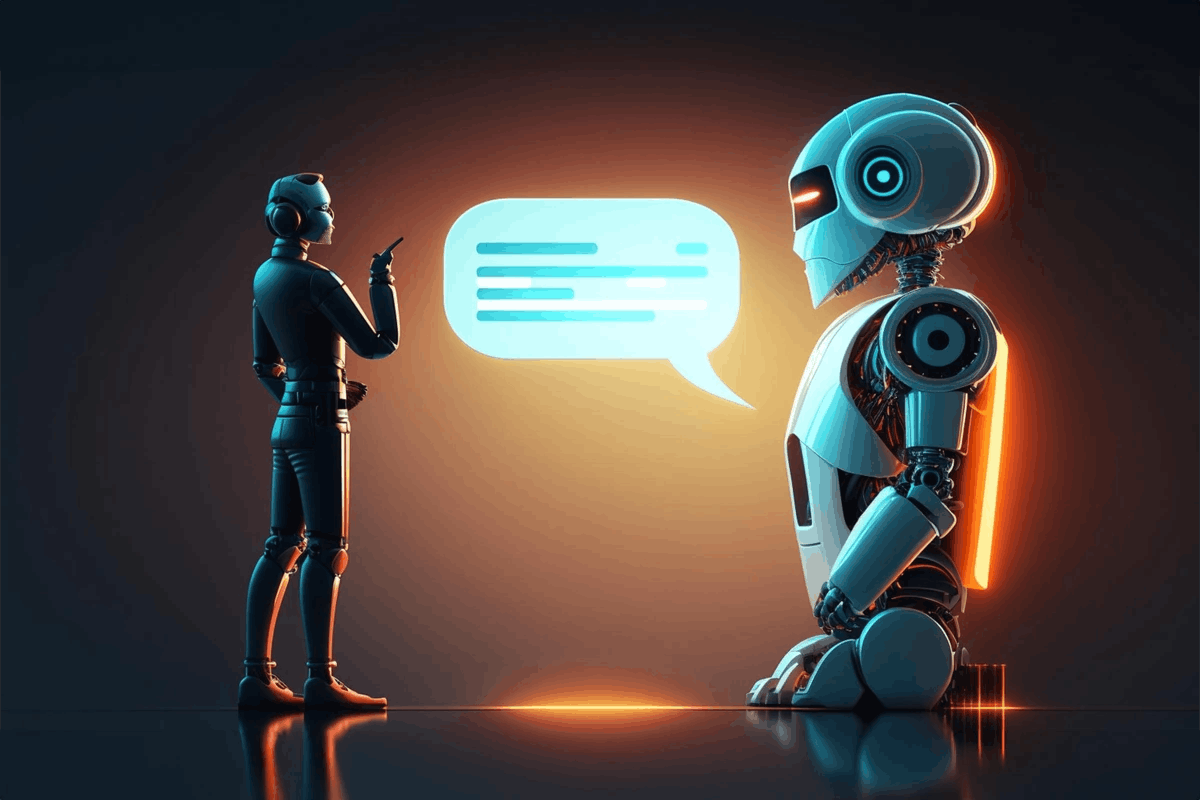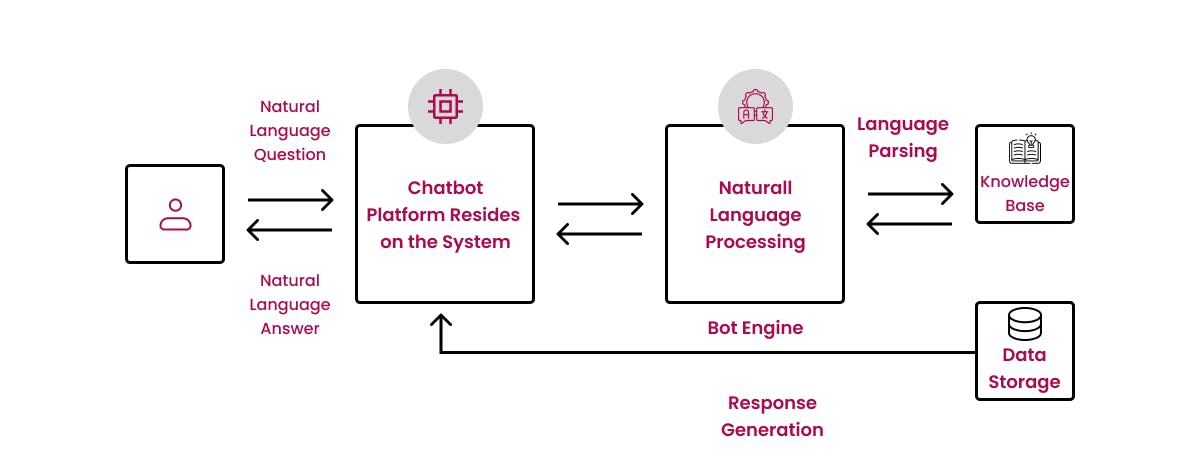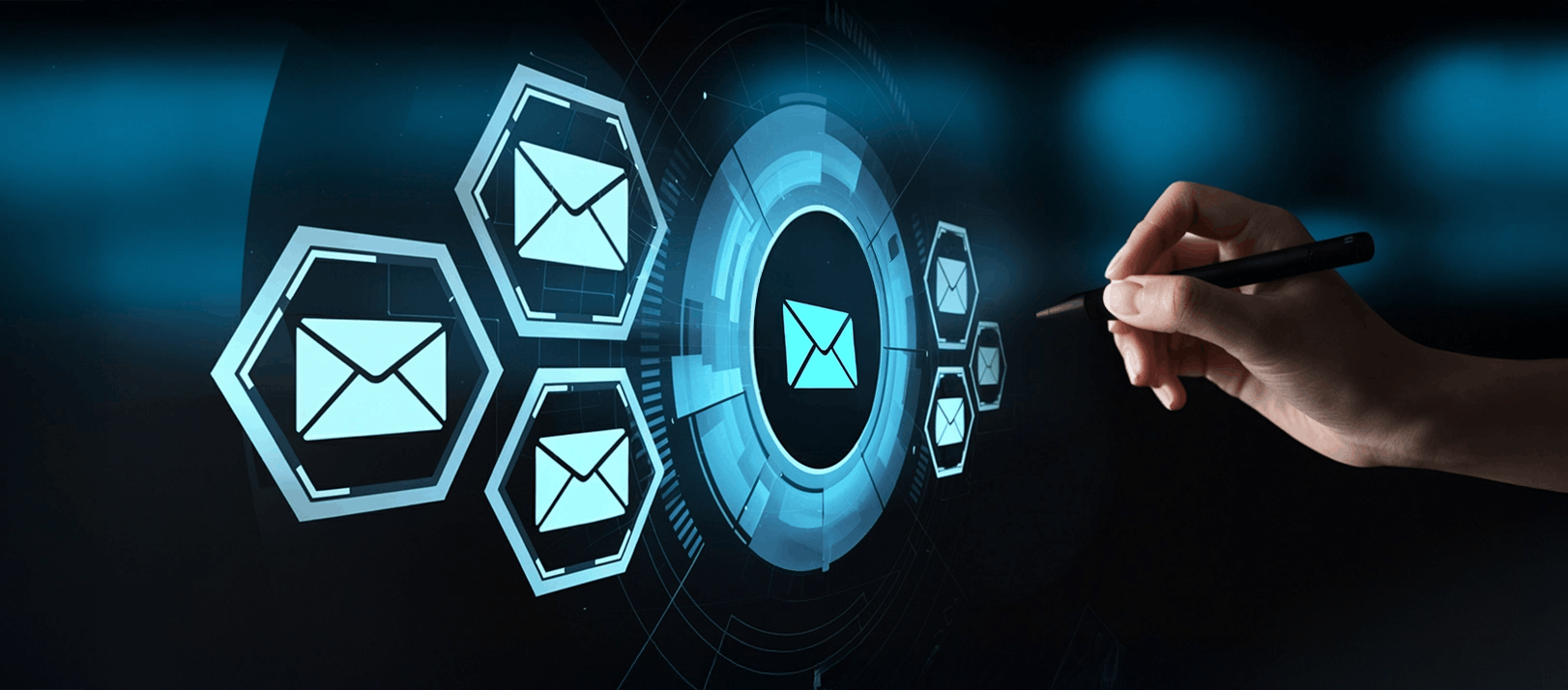Businesses in today's digital world are constantly looking for ways to enhance their operations and customer service. Artificial intelligence services have shown to be avant-garde in this field, particularly in the context of chatbots.
The development of AI chatbots has brought about a pioneering change in customer care and engagement, enabling companies to influence AI to provide individualised and effective help. Comprehending the possible uses and strengths of AI chatbots, AI Consultants or AI Consulting Services may develop top plans for incorporating these smart tools into their daily operations that will ultimately boost advancement and increase customer satisfaction.
What is an AI Chatbot?
Artificial Intelligence Chatbots, or AI Chatbots for short, are conversational agents that use AI technology to drive their conversations. With the help of this advanced technology, chatbots may simulate human-like dialogues by interacting with people in natural language. At the heart of these chatbots is Artificial Intelligence (AI), which enables them to comprehend and evaluate user input, produce pertinent responses, and even learn from previous exchanges to enhance ongoing conversations.
Types of Chatbots
There are several types of chatbots, each with its unique functionality and purpose.
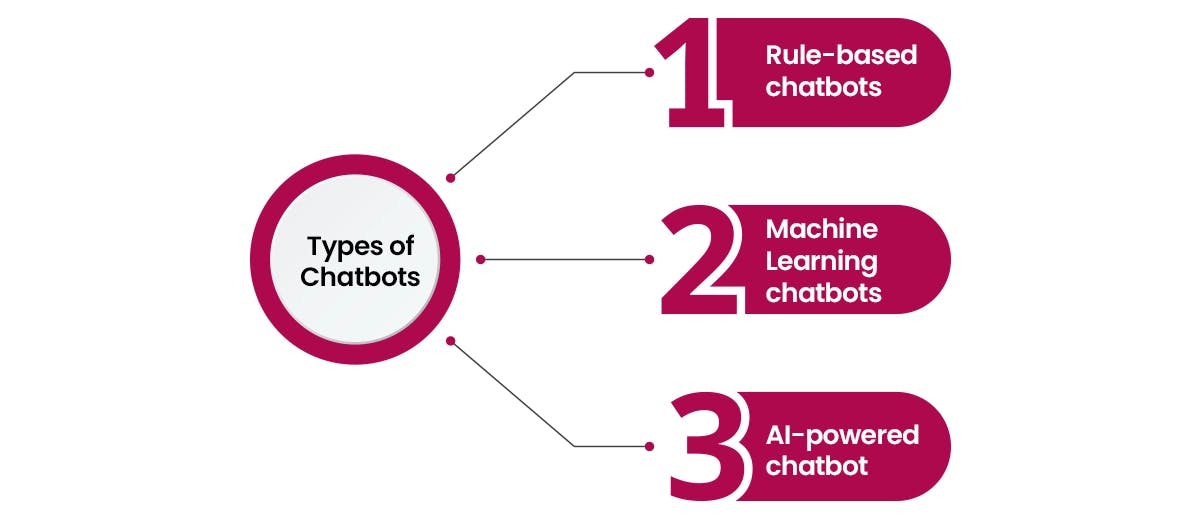
- Rule-based chatbots
Chatbots that are predefined and adhere to a predetermined set of rules are known as rule-based chatbots. These chatbots frequently give standard responses and have a limited capacity to comprehend complicated questions. A rule-based chatbot does not allow the user to enter anything other than what it is programmed to accept. It also cannot learn from past chats and cannot evolve on its own; instead, it runs its race. - Machine Learning chatbots
Machine learning chatbots analyse and learn from user interactions through algorithms, which allow them to gradually improve their responses. With the ability to adjust to user input, these chatbots can provide more precise and customised responses. Certain tasks or services, like booking reservations, responding to customer questions, or making product recommendations, are the focus of certain transactional chatbots. These chatbots are frequently integrated with APIs and back-end systems to retrieve pertinent data and handle user transactions. - AI powred Chatboat
There is also the generative chatbot, which is referred to as the open-domain or AI-powered chatbot. The elements of rule-based and machine-learning chatbots are combined in this AI-powered chatbot. These chatbots use advanced natural language processing methods along with machine learning models to generate responses in real time. They can understand context, respond on their own, and take part in more in-depth conversations. These chatbots are always learning and improving their generation and language comprehension abilities.
In general, AI chatbots can metamorphose how people engage with technology by offering effective and customised support across a range of industries, including healthcare, education, customer service, and more.
Chatbots are now more intelligent due to advances in artificial intelligence (AI) and natural language processing. It allows them to comprehend user inquiries and respond with a higher degree of accuracy and human-like dialogue. These sophisticated chatbots, like Siri and Alexa, comprehend user inquiries and provide more human-like responses by utilising machine learning and natural language processing techniques.
How to build an AI-powered chatbot?
Although building an AI-powered chatbot can be challenging, it is unquestionably feasible with the correct resources and expertise. You can find a comprehensive guide on building an AI-powered chatbot here:
- Define the purpose
To begin, decide what your chatbot's goal is. Decide what it will do and what issues it will resolve. This will assist you in creating the conversational flow and functionality of the chatbot. - Choose a platform
Choose a framework or platform that facilitates natural language processing (NLP) and artificial intelligence (AI) features. IBM Watson, Microsoft Bot Framework, and Dialog Flow are popular choices. These platforms facilitate the development process by providing pre-built models and APIs. - Design the conversation flow
To see how the chatbot will communicate with users, make a conversational flowchart. Find the various user goals or intents, and then map out the potential user inputs and the corresponding bot responses. This will contribute to a smooth and simple user interface. - Train the chatbot
To train your chatbot, apply machine learning techniques. This entails giving the chatbot access to a sizable dataset of labelled conversations so that it can pick up context and pattern recognition. Use the natural language processing (NLP) features of the platform of your choice to train the chatbot to comprehend user input and provide relevant responses. - Integrate AI features
By integrating your chatbot with other AI services, you can improve its AI capabilities. For example, you can combine language translation to facilitate multiple language conversations, entity recognition to extract crucial information, and sentiment analysis to comprehend user emotions. - Test and iterate
Make sure your chatbot comprehends user input correctly and responds appropriately by conducting a thorough test. Adjust its features and design in response to user input and empirical usage data. By making constant enhancements, you can optimise user satisfaction and chatbot efficacy.
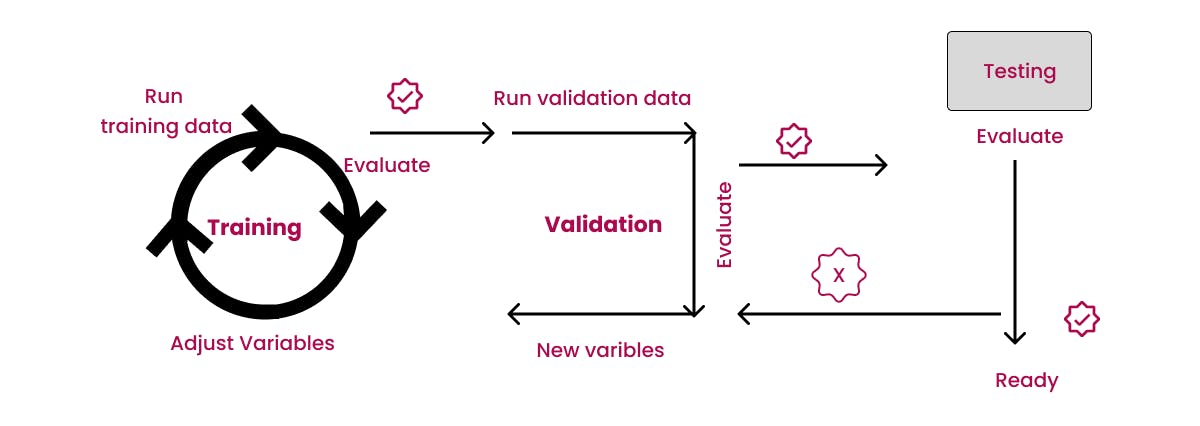
Remember that developing an AI-powered chatbot necessitates a blend of technical know-how, inventiveness, and in-depth comprehension of user requirements. Building an advanced and user-friendly chatbot is easy if you follow this guide and use infographics as visual aids.
Architectural Components of AI-powered Chatbots
Artificial Intelligence-driven chatbots are proliferating across multiple sectors, transforming customer support and user engagement. Several important components can be found when looking at these intelligent chatbots' architectural components.
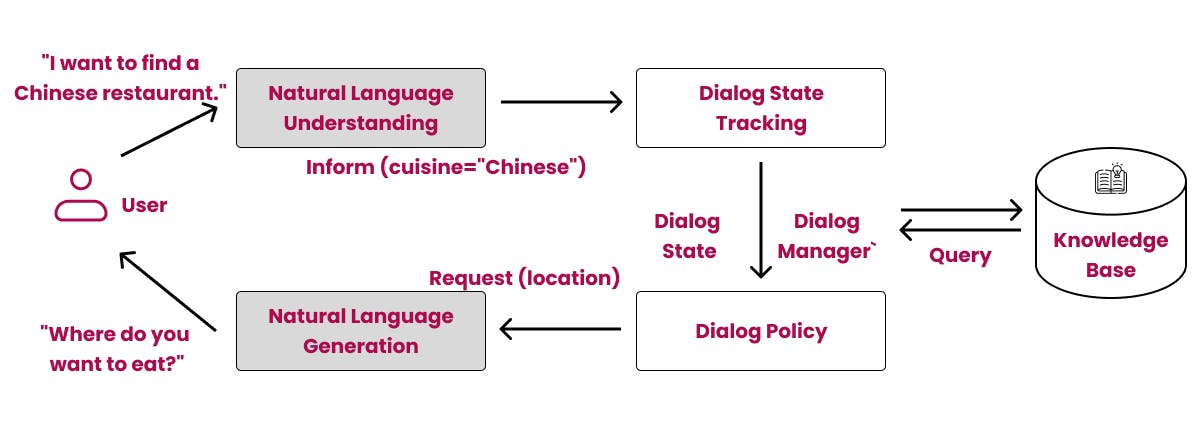
- Natural Language Processing (NLP)
First off, the Natural Language Processing (NLP) engine, which is in charge of comprehending and interpreting user input, is the central component of an AI-powered chatbot. This part uses algorithms to take text and turn it into meaning so the chatbot can respond accordingly. - Knowledge Base
A knowledge base is another common component of chatbot architecture, that stores an abundance of data and information that the chatbot can access to deliver pertinent and accurate responses. Through the use of machine learning techniques, the knowledge base can be expanded, enabling the chatbot to gradually increase its level of knowledge. - Dialogue Management
The dialogue manager, or "brain" of the chatbot, is another crucial architectural component. Based on the user's input and the current context of the conversation, the dialogue manager uses a variety of techniques, such as rule-based systems or machine learning algorithms, to determine the appropriate response. This part makes sure the chatbot has conversations that make sense and fit the given context. - Intent Recognition
The architecture of the chatbot includes a component for intent recognition. To help the chatbot comprehend the user's request or question, this component focuses on determining the intention behind the user's message. The intent recognition component uses machine learning algorithms to categorise user input into distinct groups so the chatbot can respond with the most pertinent information. - Sentiment Analysis
A sentiment analysis part is often built into the chatbot architecture, attempting to ascertain the user's message's emotional tone. Sentiment analysis can improve the user experience by enabling the chatbot to react to the user's emotions in an appropriate or supportive manner.
The NLP engine for text comprehension, a knowledge base for information archiving, a dialogue manager for context-driven responses, intent recognition for user intention understanding, and sentiment analysis for emotional analysis are some of the architectural elements of AI-powered chatbots.
Together, these elements enable chatbots to offer perceptive and efficient interactions, raising user happiness and expediting customer support procedures.
Advantages of AI-Powered Chatbots
AI-powered chatbots have completely changed how consumers communicate with businesses by offering a smooth, effective, and customised experience. Chatbots can handle several customer inquiries at once, which can cut down on response times and free up customer support agents to work on more complicated problems. Several major advantages that AI-powered chatbots provide are the reason for their increasing popularity.
- Enhancing client service by AI-powered chatbots
Chatbots are transforming customer interactions for businesses or Artificial Intelligence Development Companies with their advanced capabilities. Because these intelligent virtual assistants are always available, clients don't have to wait for human agents, and response times are greatly shortened. The capacity of AI-powered chatbots to manage several client inquiries at once is one of their main advantages. Chatbots, as opposed to human agents, can hold multiple conversations at once, guaranteeing that no customer remains awaited. Giving customers timely assistance, AI-powered chatbots manage to increase customer satisfaction in addition to increasing efficiency. - 24/7 Availability
One of the key benefits of chatbots powered by AI is their round-the-clock accessibility, which ensures that customers can contact them for assistance whenever they need it. Despite the busy holiday season and time of day, these chatbots are always ready to engage with users and provide support. With this 24/7 availability, businesses can better serve their international clientele across time zones, increasing client satisfaction and loyalty. - Prompt Responses
AI-powered chatbots can respond to consumer inquiries right away. These chatbots can comprehend consumer inquiries and deliver precise and pertinent responses in real-time by utilising machine learning and natural language processing algorithms. This lowers response times and enhances the general customer experience by doing away with the need for customers to wait for a live agent to become available.
Customers not only save time with AI-powered chatbots but their impression of the brand's professionalism and efficiency is also improved. With chatbots, artificial intelligence companies provide prompt and precise assistance, which is something that customer’s value. - Personalised and efficient customer interactions
One of the vital advantages of AI-powered chatbots is their ability to provide efficient and customised customer interactions. When using traditional customer service channels, clients frequently have to go through difficult phone menus or wait in lengthy lines before speaking with a live agent. Chatbots with AI power can provide individualised interactions using machine learning algorithms and customer data.
Chatbots can customise their recommendations and responses to each customer's unique preferences and needs by examining past interactions and purchase history. Customers receive a more personalised, tailored experience from this degree of personalization, which makes them feel appreciated and understood. - Streamlining business operations
Organisations can benefit greatly from using chatbots powered by artificial intelligence to streamline business processes. These intelligent virtual assistants have proven to be highly beneficial, performing everything from automating repetitive tasks to offering round-the-clock support and delivering personalised experiences. Businesses can boost customer satisfaction, increase efficiency, and obtain a competitive edge in today's digital market by adopting this cutting-edge technology. - Automating time-consuming and repetitive tasks
Efficiency is essential in today's fast-paced company environment to keep up with customers and outpacing competitors. Inquiries from customers, product recommendations, order processing, and frequently asked questions are just a few of the tasks that chatbots can perform that would otherwise need human intervention. Companies may save money on time and resources by automating these chores, freeing up staff members to work on more difficult and valuable projects. - Cost savings and increased productivity
Businesses can achieve significant cost savings and increased productivity by implementing chatbots powered by AI. In contrast to human customer support agents, chatbots can work continuously, around the clock, without the need for breaks or relaxation and also provide accurate information all the time. This implies that even after regular business hours, customer inquiries can be handled effectively and promptly. Additionally, by eliminating the need for additional customer support employees, chatbots can help businesses save money. - Consistency and accuracy in delivering information
An additional benefit of chatbots powered by AI is their accuracy and consistency in information delivery. Chatbots rely on structured data and predefined algorithms to provide accurate and consistent responses, in contrast to human agents who might unintentionally provide inconsistent or incorrect information. This lessens the feasibility of misunderstandings or disinformation, guaranteeing that clients receive dependable and trustworthy support. - Improving customer satisfaction with AI-powered chatbots
AI-powered chatbots have completely changed how companies communicate with their clients, increasing client satisfaction. The purpose of these intelligent virtual assistants is to guarantee a smooth and effective customer service experience by promptly and accurately responding to customer inquiries.
Chatbots with artificial intelligence (AI) skills provide quick and effective solutions for consumer problems. They can assess an issue fast, locate pertinent data, and offer suitable solutions or point clients in the direction of pertinent resources. AI-powered chatbots can quickly handle a variety of tasks, including providing product recommendations, addressing frequently asked questions, and resolving common problems, all of which contribute to customer satisfaction.
Limitation of AI-powered chatbots
Chatbots, which provide automated support and user interaction, are becoming more and more common in a variety of industries as artificial intelligence (AI) advances. Although AI-powered chatbots have benefits, it's crucial to understand their limitations.
- Their inability to completely understand and translate complex human emotions is one of their main limitations.
- Even though chatbots can be trained to identify specific words or phrases, they frequently find it difficult to understand the subtleties of human emotion and react appropriately.
- It may lead to misunderstandings or insufficient assistance for individuals in need of emotional support.
- Furthermore, Chatbots may not be able to handle very specific or unusual queries because they usually rely on pre-programmed responses that might not be customised to the needs of the user.
- Chatbots are great at handling repetitive jobs and giving fast information but they might not be as effective in circumstances that call for empathy, creativity, or critical thought.
- It's vital to find a balance between acknowledging the limitations of AI-powered chatbots, making use of their efficiency and convenience, and guaranteeing that human support is always accessible when needed.
Top AI Chatbot in 2025
Just like machine learning services and machine learning development services, these AI chatbots are essential in customer service because they provide quick, individualised assistance, which increases customer satisfaction and loyalty.
The following sections will highlight the innovative effects of AI chatbots across a range of industry domains, including financial services, retail and e-commerce, healthcare and wellness, and education and training.
1. Top AI Chatbots for Customer Service in 2025
In today’s competitive business world, businesses are highly focused on resolving their customer’s concerns quickly and efficiently. This is where AI chatbots play a key role in providing excellent customer care service and helping service teams to grow their customer base.
Here are the lists of top AI chatbots for customer service:
1. Tidio
It is specifically designed to assist small and medium-sized businesses in engaging customers in real time. The bot simply transforms customer service into sales.
2. Zendesk
It is one of the best customer service chatbots that operates with unified customer data. The bot improves desk capabilities through built-in voice calling and robust ticketing.
2. Top AI Chatbots for E-commerce and Retail
AI chatbots play a critical role in e-commerce and retail by offering proactive customer support, facilitating smooth transactions, and making personalised product recommendations.
1. ShopBotAI
It is the ultimate example of AI chatbot innovation, which improvises the entire operations of eCommerce and retail businesses.
2. SaleAssist
It makes use of AR and VR technologies to improve sales by increasing customer satisfaction.
3. Top AI Chatbots for Healthcare and Wellness
Deployment of chatbots in the healthcare and wellness sector is the most promising and astonishing technique that handles patients and clients in a better way. The below-listed chatbots are the top AI-powered bots used in the healthcare and wellness industry.
1. HealthBotX
The ability to interface with electronic health record (EHR) systems makes it stand out.
2. WellnessBuddy
It reveals how emotional intelligence is being used in AI chatbots.
4. Top AI Chatbots for Financial Services
Artificial intelligence (AI) chatbots play a critical role in the financial services industry by offering proactive customer support, facilitating smooth transactions, and providing personalised financial advice.
1. FinBotAI
It represents the height of artificial intelligence chatbot innovation in the financial services industry.
2. InvestAssist
It makes use of omnichannel capabilities to guarantee a consistent and seamless customer service experience.
5. Top AI Chatbots for Education and Training
The modern AI chatbots of 2025 represent the pinnacle of technological advancement and usher in a time when artificial intelligence development services will be able to interact with their audience seamlessly, provide unmatched customer care, and boost operational effectiveness thanks to artificial intelligence's extraordinary power.
1. LearnAssist and EduBotX
It represents the height of AI chatbot innovation in the field of education, providing specialised resources and assistance.
2. Mongoose Harmony by Drift
It is an intelligent chatbot and an excellent virtual assistant designed specifically to cater all the needs of the students studying higher education.
Conclusion
Codiste is a top AI chatbot development company whose unmatched knowledge, advanced innovation, and unbreakable dedication to quality make them the best option for companies and developers looking to leverage AI chatbots. Working with Codiste, you're doing more than just future-driven solutions; you're taking the first steps towards a life-changing experience that will revamp the approach you interacting with your audience and advance your business ventures.
We will create an entryway to a future for our clients where AI chatbots surpass expectations and completely reimagine the nature of customer interactions. Being a premier choice for AI chatbot development, Codiste owes its advanced solutions and unmatched experience when compared with machine learning service providers. With Codiste, you can achieve greater success in your endeavours, regardless of your AI Consulting Services or machine learning consulting services.
